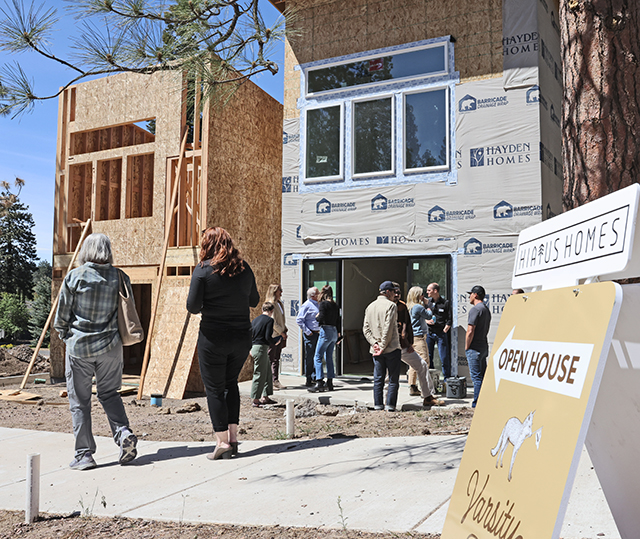‘Shots Fired’ tackles racism, police shootings
Published 6:26 am Wednesday, March 22, 2017

- Reggie Bythewood and Gina Prince-Bythewood are the creators of the upcoming miniseries “Shots Fired.” The murder mystery taps into the public debate over police shootings.(Tony Cenicola/The New York Times)
“Shots Fired,” a new murder mystery created by Reggie Rock Bythewood and Gina Prince-Bythewood, debuting Wednesday on Fox, was inspired by recent racially charged police shootings. But it has been percolating for years.
It started before this married couple even started dating, when, as writers on “A Different World,” they bumped into each other as each sought solace after the Rodney King verdict in 1992 at the First AME Church of Los Angeles. More than two decades later, when their son was distraught over the acquittal of George Zimmerman in the shooting of Trayvon Martin, Reggie Bythewood showed him a documentary about an even older injustice, the lynching of Emmett Till.
“We started feeling like, as artists, we don’t want to always be on the sidelines,” Reggie Bythewood said. “We felt the need to do something like this.”
Originally conceived as a feature film, “Shots Fired” became a 10-episode TV series when Fox asked Prince-Bythewood (“Beyond the Lights”) to create a show about such themes in the wake of the 2014 killing of Michael Brown and resulting demonstrations in Ferguson, Missouri.
“Because of the reach of network television, we could put this out into the world in a big way,” she said.
Sanaa Lathan and Stephan James star as Department of Justice officials unraveling twin mysteries in a North Carolina town. One surrounds a high-profile police shooting, which inverts the typical dynamic by having a black officer, played by Tristan Wilds, shoot an unarmed white man. The other involves a separate, but possibly related, murder of an African-American boy. (Other stars include Helen Hunt, Richard Dreyfuss and Aisha Hinds.)
Despite its tragic underpinnings, “Shots Fired” is at heart a mystery story, weaving the familiar pleasures of crime drama with storylines exploring how such events affect families and communities. The aim is to entertain while also highlighting racial double standards in how police shootings and other crimes are interpreted, covered and prosecuted.
“We have a creed: Get your audience at the edge of their seats, and while they’re leaning forward, hit ’em with the truth,” Bythewood said. “Hopefully while people are digging into the mystery, there will be an opportunity to challenge their perspectives as well.”
Over breakfast at a Midtown hotel earlier this month, the Bythewoods discussed “Shots Fired,” how real-life shootings affected the show and why its context changed with the election of Donald Trump. These are edited excerpts from the conversation.
Q: The news-making police shootings have generally been white officers’ killing of black victims. Why did you flip that?
A: Gina Prince-Bythewood: There were a couple of reasons. During the Zimmerman trial, many people were sending George Zimmerman money to help with his costs, as opposed to focusing on the young boy who was murdered. That lack of empathy and humanity was shocking. We felt inverting it was a good way to allow people to identify with the character and understand what we feel. And because we were dealing with two murders, it was a way to show how the community and the media often treat victims when the race is different. Why one may be painted as a college student and the other as a drug dealer or a thug.
Q: While you shot the show last summer, there was another spate of police shootings. How did that affect the production?
A: Prince-Bythewood: The actors were messed up. After the second shooting, our first assistant director, a black woman named Shawn Pipkin, pulled the entire cast and crew together for a prayer circle. It was really important to ground us, to remember to honor these real people. Tristan Wilds, it was very difficult for him that day. He had to be consoled; he was crying. The things we were shooting on that exact day mirrored what was happening, and that was tough for him. It just reminds you that we have a cause that is bigger than ourselves. We’re unapologetically idealistic that art can change the world.
Q: Was there a moment when you felt like you had realized your goals for “Shots Fired”?
A: Bythewood: There was a spiritual nature to what we’re doing. I directed the finale, and on the last day of shooting, someone pointed out to me that it was Emmett Till’s birthday. It was so deep — that was how so much of this started for us, and that it would end on his birthday. I definitely felt like, wow, did we really do this?
Prince-Bythewood: At the end of the process, you finalize the sound and the color, and the guy in charge of doing that was a white guy, probably in his 60s. No one had seen the whole show yet, and I remember he was so enthralled.
And that felt really good, because you think, is this going to appeal to everyone? And the fact that the first audience was this man who could not get enough — it felt like, I think we did it.






